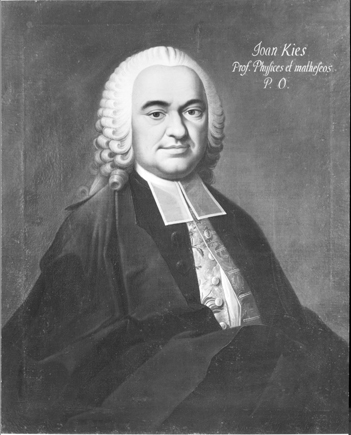Johann Kies on:
[Wikipedia]
[Google]
[Amazon]
Johann Kies (September 14, 1713 – July 29, 1781) was a German  From 1742 to 1754, at the recommendation of the mathematician
From 1742 to 1754, at the recommendation of the mathematician
''Sur les Éclipses des étoiles fixes par la lune
and ''Description d'un instrument qui se trouve à l'observatoire de Berlin'
In his ''Rapport de quelques observations célestes faites à l'observatoire Royal'', Kies wrote, "Observations on eclipses are extremely useful, especially the ones that are exact. They serve primarily to understand, if the theories on the Sun and the Moon are well or badly ascertained in the astronomical tables, and can either confirm them, or give us a need to reform them
He subsequently taught also at the Collegium of Tübingen. From 1754 to 1755, Kies served as director of the Astronomisches Rechen-Institut in
Imago Mundi: Johann Kies
{{DEFAULTSORT:Kies, Johann 18th-century German astronomers 18th-century German mathematicians 1713 births 1781 deaths
astronomer
An astronomer is a scientist in the field of astronomy who focuses their studies on a specific question or field outside the scope of Earth. They observe astronomical objects such as stars, planets, natural satellite, moons, comets and galaxy, g ...
and mathematician
A mathematician is someone who uses an extensive knowledge of mathematics in their work, typically to solve mathematical problems.
Mathematicians are concerned with numbers, data, quantity, structure, space, models, and change.
History
On ...
. Born in Tübingen, Kies worked in Berlin in 1751 alongside Jérôme Lalande in order to make observations on the lunar parallax
Parallax is a displacement or difference in the apparent position of an object viewed along two different lines of sight and is measured by the angle or semi-angle of inclination between those two lines. Due to foreshortening, nearby objects ...
in concert with those of Nicolas Louis de Lacaille
Abbé Nicolas-Louis de Lacaille (; 15 March 171321 March 1762), formerly sometimes spelled de la Caille, was a French astronomer and geodesist who named 14 out of the 88 constellations. From 1750 to 1754, he studied the sky at the Cape of Good ...
at the Cape of Good Hope
The Cape of Good Hope ( af, Kaap die Goeie Hoop ) ;''Kaap'' in isolation: pt, Cabo da Boa Esperança is a rocky headland on the Atlantic coast of the Cape Peninsula in South Africa.
A common misconception is that the Cape of Good Hope is t ...
.
 From 1742 to 1754, at the recommendation of the mathematician
From 1742 to 1754, at the recommendation of the mathematician Leonhard Euler
Leonhard Euler ( , ; 15 April 170718 September 1783) was a Swiss mathematician, physicist, astronomer, geographer, logician and engineer who founded the studies of graph theory and topology and made pioneering and influential discoveries in ma ...
, he was made professor of mathematics at Berlin's Academy of Sciences and astronomer at its observatory. His reports from this time include ''De la Situation la plus avantageuse des planètes pour découvrir les irrégularités de leurs mouvemens''Sur les Éclipses des étoiles fixes par la lune
and ''Description d'un instrument qui se trouve à l'observatoire de Berlin'
In his ''Rapport de quelques observations célestes faites à l'observatoire Royal'', Kies wrote, "Observations on eclipses are extremely useful, especially the ones that are exact. They serve primarily to understand, if the theories on the Sun and the Moon are well or badly ascertained in the astronomical tables, and can either confirm them, or give us a need to reform them
He subsequently taught also at the Collegium of Tübingen. From 1754 to 1755, Kies served as director of the Astronomisches Rechen-Institut in
Heidelberg
Heidelberg (; Palatine German language, Palatine German: ''Heidlberg'') is a city in the States of Germany, German state of Baden-Württemberg, situated on the river Neckar in south-west Germany. As of the 2016 census, its population was 159,914 ...
.
Kies was one of the first to propagate Newton's discoveries in Germany, and dedicated two of his works to the Englishman: ''De viribus centralibus'' (Tübingen, 1758) and ''De lege gravitatis'' (Tübingen, 1773). Kies is also the author of a work on lunar influences: ''De influxu lunae in partes terrae mobiles'' (Tübingen, 1769). He wrote many other works, both in French
French (french: français(e), link=no) may refer to:
* Something of, from, or related to France
** French language, which originated in France, and its various dialects and accents
** French people, a nation and ethnic group identified with Franc ...
and in Latin
Latin (, or , ) is a classical language belonging to the Italic branch of the Indo-European languages. Latin was originally a dialect spoken in the lower Tiber area (then known as Latium) around present-day Rome, but through the power of the ...
, on astronomy.
Kies corresponded with Euler from 1747 to 1767. Their correspondence consists of 8 letters, all of which were written by Kies.
The crater Kies on the Moon
The Moon is Earth's only natural satellite. It is the fifth largest satellite in the Solar System and the largest and most massive relative to its parent planet, with a diameter about one-quarter that of Earth (comparable to the width of ...
is named after him.
Sources
Imago Mundi: Johann Kies
{{DEFAULTSORT:Kies, Johann 18th-century German astronomers 18th-century German mathematicians 1713 births 1781 deaths